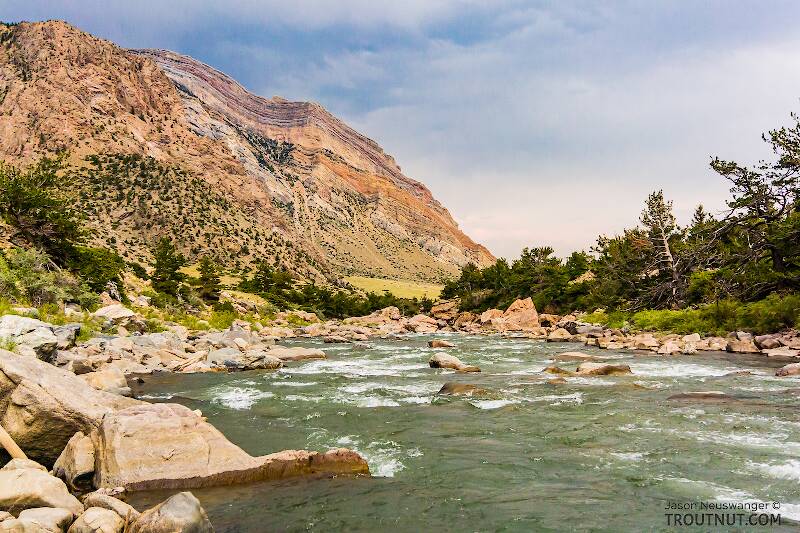
Salmonflies
Pteronarcys californica
The giant Salmonflies of the Western mountains are legendary for their proclivity to elicit consistent dry-fly action and ferocious strikes.

Stonefly Species Megarcys signata (Larimide Springflies)
Species Range
Physical description
Most physical descriptions on Troutnut are direct or slightly edited quotes from the original scientific sources describing or updating the species, although there may be errors in copying them to this website. Such descriptions aren't always definitive, because species often turn out to be more variable than the original describers observed. In some cases, only a single specimen was described! However, they are useful starting points.
Description from GBIFthe Global Biodiversity Information Facility
Source: Larvae Of The Nearctic Species Of The Stonefly Genus Megarcys Klapálek (Plecoptera: Perlodidae)
(Figs. 2 - 11, 13, 18, 19, 25, 31, 37, 43, 50, 61, 71, 80, 85 a-b, Table 1)Source: Larvae Of The Nearctic Species Of The Stonefly Genus Megarcys Klapálek (Plecoptera: Perlodidae)
Characters. Head capsule width male 3.24 - 3.48 mm, female 4.14 - 4.20 mm; pronotal width male 2.64 - 2.76 mm, female 3.36 - 3.90 mm; body length male 16.2 - 18.5 mm, female 25 - 26 mm (Table 1). Color and pigmentation (Figs. 2, 3, 13, 19, 25, 43, 50), lacinia (Fig. 21), and dorsomesal band of erect silky white hairs (Figs. 18, 19) typical of genus and as described by Stewart & Stark (1988, 2002). Wing pads of male and female (Figs. 2, 25) macropterous (or brachypterous in high elevation streams). Gill number and arrangement typical of genus (Fig. 61). Submental gill length male 0.36 - 0.48 mm, female 0.54 - 0.60 mm; anterior supracoxal gill length male 0.36 - 0.42 mm, female 0.45 - 0.0.60 mm (shorter in high elevation Chasm Lake outlet stream in Rocky Mountain National Park) (Table 1). Legs (Figs. 6, 31) with setation typical of genus as described by Stewart & Stark (2002). Y-arms of mesosternum meet anterior corners of furcal pits (Figs. 7, 8, 37), typical of genus. Cercal segments male 26 (Table 1), as described by Stewart & Stark (2002) with apical whorl of short setae on cercomeres and dorsal fringe of silky white hairs (Fig. 11). Developing membranous, windsock-like posterior process of male epiproct (Fig. 71) evident in late instar individuals, and pointed posteroventrally in lateral view (Fig. 80). Developing female subgenital plate of 8 th sternum (Figs. 50, 85) shallowly notched mesally.
Start a Discussion of Megarcys signata
Stonefly Species Megarcys signata (Larimide Springflies)
Species Range
Common Name
Resources
- NatureServe
- Integrated Taxonomic Information System
- Global Biodiversity Information Facility
- Described by Hagen, H.A. (1874) Report of the Pseudo-Neuroptera and Neuroptera collected by Lieut. W. L. Carpenter in 1873 in Colorado. In: Annual Report on the United States Geological and Geographical Survey of the Territories, embracing Colorado, being a report of progress of the explorations for the year 1873. U. S. Geological Survey, Washington, D.C., pp. 571–606.


